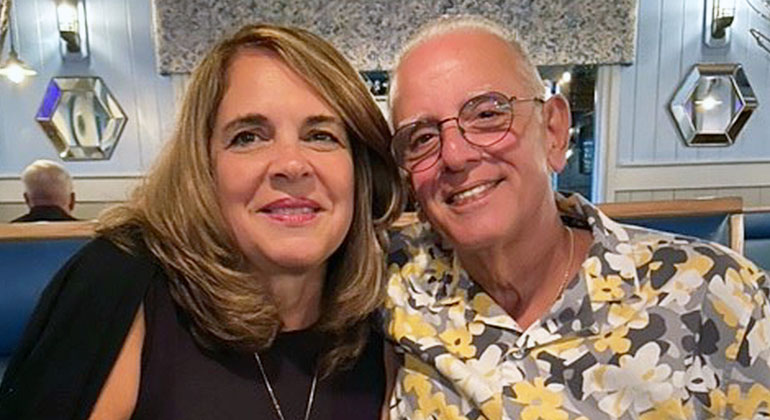
A Case of Acute Pancreatitis Calls for Quick Action at Mount Sinai Brooklyn
Steve Nuzzo, age 67, wasn’t about to let a little heartburn and indigestion get in the way of his South Carolina vacation. “The symptoms weren’t too unusual for me,” he says. Steve, a retired facilities manager, just put up with the inconvenience until he got home. When he and his wife, Carol, returned to Brooklyn, they went to a Yankees game to celebrate their 41st wedding anniversary. Carol was worried because Steve didn’t eat a single hotdog. “They’re his favorite,” she says. “When he didn’t have any, I knew something was up.”
The following day, the mild pain in Steve’s chest and back became unbearable. He started vomiting violently and going in and out of consciousness. “Honestly, I thought I was going to die,” he said in a report on his health journey on News 12 Brooklyn. Carol called 911, and the ambulance rushed Steve to Mount Sinai Brooklyn.
Diagnostic tests showed Steve had severe acute pancreatitis (inflammation of the pancreas) and cholangitis (a bile duct infection). “Pancreatitis is when the pancreas becomes inflamed,” says Jack Braha, DO, Chief of Gastroenterology at Mount Sinai Brooklyn. Symptoms often include abdominal pain that radiates to the back or shoulders and frequently appear with little or no warning. Patients feel “like a bomb exploded in their abdomens,” Dr. Braha says, adding that anyone who feels this kind of acute pain, especially after a meal and for more than 30 minutes should see a physician right away.
Usually, pancreatitis affects people who are heavy drinkers, or have cystic fibrosis, or who have gallstones that cause inflammation in the gallbladder. But Steve was an atypical case. His gallbladder was removed decades earlier and he wasn’t much of a drinker. Steve is one of the 5 percent of people without a gallbladder whose body still forms stones in the tubes that drain their liver.
Once symptoms begin, pancreatitis works quickly. Soon Steve also had sepsis and multiple organ failure, both common effects of acute pancreatitis. Researchers don’t know why, but acute pancreatitis—the kind Steve had—seems to be on the rise in the United States. Men are more likely to develop the condition than women. When Steve realized how serious his condition was, he started to worry about family events he might miss. Especially his son’s upcoming wedding in Cancun.
The doctors at Mount Sinai Brooklyn responded swiftly. Dr. Braha performed an emergency procedure to clear the gall stone and unblock Steve’s bile ducts. He was assisted by emergency medicine physicians Christopher Caravanos, MD, and Peter C. Van Gronigen, MD, both assistant professors at the Icahn School of Medicine at Mount Sinai. The procedure, called an endoscopic retrograde cholangiopancreatography, saved Steve’s life. He spent a week in the intensive care unit, then another week in the progressive care unit as his medical team observed him carefully. “I was in good hands with the capable, caring staff at Mount Sinai Brooklyn,” Steve says.
During these tense 16 days, Valerie Merrell, RN, and her colleagues kept Carol up to date with the latest news about her husband’s condition. “I am so grateful to them—and to everyone else at Mount Sinai Brooklyn,” Carol says.
Thanks to the physicians’ quick response, Steve made a full recovery—and got to his son’s beachside wedding. Steve wants to make sure people know that this could happen to them, too. Because of the stealthy nature of pancreatitis, Steve encourages people to see their doctor regularly. “I would simply recommend that everyone be diligent in getting an annual physical.”